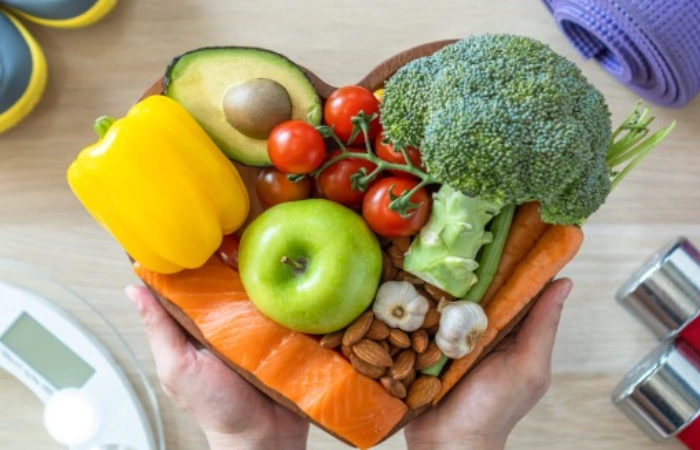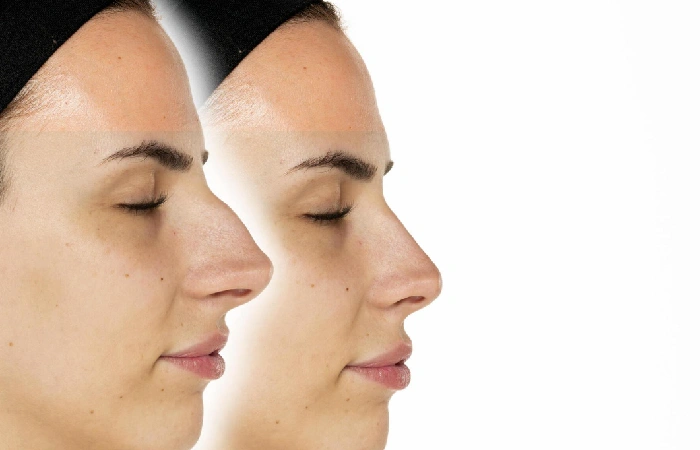Making healthy choices during any life stage increases the chances of staying healthy as you age. Even in your 40s, 50s, and 60s, it’s never too late to embark on a healthy lifestyle. The steps you take during these decades may help reduce the risk of heart disease and improve the quality of life and health as you grow older. After all, heart disease is the leading cause of death in the U.S., accounting for around one death in every four.
While chances of getting a cardiovascular disease increase with age, don’t assume this will happen. There’s a lot you can do to stay healthy in middle age and beyond.
Here are some tips for maintaining middle-aged heart health.
Table of Contents
Exercise More
Like any other muscle, your heart can weaken with time, especially if you lead a sedentary lifestyle. A muscle in the heart’s left ventricle (used for pumping oxygen-rich blood back to the body) becomes stiffer as you become less active and age.
The change to your heart muscle and simultaneous stiffening of arteries leads to high blood pressure, the prelude to the harmful cardiovascular aging cycle. Lack of intervention sets the stage for heart disease and failure later.
Exercise is an excellent way to slow the heart’s aging process. Physical activity and exercise are usually the first things doctors mention to improve overall heart health.
But how does exercise help?
Exercises force your heart to pump more blood around your body, muscles, and lungs. The entire process helps blood vessels relax and makes your heart run more efficiently, which helps keep blood pressure low.
3 Types of Exercise to Boost Heart Health
Physical activity is a significant step toward achieving good middle-aged heart health. The activity also helps keep your weight under control. Exercises ward off artery damage from high blood sugar, high cholesterol, and high blood pressure that may lead to stroke or heart attack.
Here’s how three major types of exercise benefit your heart.
Resistance Training
Strength work has a specific effect on your body composition. For instance, people with a lot of body fat can use it to reduce fat and increase lean muscle mass. Combining aerobic exercise and resistance work may help lower bad Low-Density Lipoprotein (LDL) cholesterol and increase good High-Density Lipoprotein (HDL) cholesterol.
Two consecutive days of weekly resistance training is good. Examples include:
- Working out with free weights such as dumbbells, barbells, or hand weights;
- Body resistance exercises such as chin-ups, squats, and push-ups.
Aerobics
These exercises help improve circulation, resulting in lowered heart rate and blood pressure. According to the treadmill stress test, aerobic exercise also increases your overall aerobic fitness and supports cardiac output.
Do at least 30 minutes of aerobic exercise daily for five days a week. Aerobic exercises include:
- Brisk walking;
- Running;
- Cycling;
- Swimming;
- And playing tennis.
Flexibility Exercises
Flexibility workouts such as stretching and balance don’t directly affect your heart health. Instead, they help musculoskeletal health stay free of joint pain, improve flexibility, and combat other muscular problems. Flexibility is a critical component in aerobic exercise and resistance training.
An excellent musculoskeletal foundation makes it easy to do exercises helping your heart. Further, it helps maintain your stability and prevent falls while exercising.
Do flexibility exercises daily and before and after other exercises. These exercises include:
- Basic stretches are found on YouTube videos or DVDs—but check with the doctor if there are concerns with the intensity.
- Yoga and tai chi to improve your skills.
Eat a Heart-Healthy Diet

Eating some foods increases your heart disease risk, but changing your habits can be challenging. Whether you have decades of unhealthy eating experience or want to fine-tune your diet, here are heart-healthy diet tips to help you.
Controlled Portion Sizes
Overloading a plate, going for seconds, and eating till you are stuffed leads to more calories than you need. The portions you get served in restaurants are usually more than enough for anyone.
Control food portion sizes for a better heart using these tips:
- Use small bowls and plates to control portions.
- Eat more nutrient-rich, low-calorie foods such as vegetables and fruits.
- Eat fewer high-sodium, high-calorie foods such as fast, processed, or refined foods.
Include More Veggies and Fruits
Vegetables and fruits are low in calories, rich in dietary fiber, and are excellent sources of minerals and vitamins. Like other plant-based and plant foods, veggies and fruits contain substances that help prevent cardiovascular diseases.
Go For Whole Grains
Whole grains are excellent sources of fiber and other nutrients that help regulate blood pressure and improve heart health. Start by making simple substitutions for refined grain products in your heart-healthy diet. However, you can be adventurous and opt for a new whole grain.
The benefits of eating whole foods transcend beyond lowering the risk of cardiovascular disease. Whole grains suitable for your heart-healthy diet include:
- Whole-grain bread;
- Whole grains such as buckwheat, barley, and brown rice;
- Regular or steel-cut oatmeal;
- High-fiber cereal with at least 5 g of fiber per serving.
Limit Unhealthy Fats
Reducing how much trans and saturated fats you intake is critical to lowering blood cholesterol and the risk of heart disease. High blood cholesterol leads to a build of artery plaque, atherosclerosis, which increases the risk of heart attack and stroke.
The 2020 to 2025 Dietary Guidelines for Americans report suggests reducing saturated fat to less than 10% of your total daily calories. To cut back, try:
- Using less margarine, butter, and shortening when serving and cooking;
- Using low-fat substitutions;
- And trimming the fat off meat or opt for lean meats with less fat.
Watch the Numbers
Maintain regular checkup appointments with your primary care provider. Practitioners with ACLS certification can advise on how often you should be monitored or screened for conditions affecting the heart.
However, knowing a few key metrics will also give you a clear picture of your current cardiac health and motivate you to maintain healthy heart numbers. Some numbers to watch include:
Number of Daily Steps
Moving helps improve all other heart-health measures. The recommended number of steps is up to 10,000 or close to five miles daily.
Blood Pressure
Hypertension or high blood pressure has no symptoms, and it’s only detectable by measuring. The optimal score is 120/80, and most people are at 140/90. A higher reading means your arteries are not responding to the force of blood pushing against the walls—increasing the risk of a heart attack.
Body Mass Index (BMI)
BMI is the calculation of body fat based on weight and height. A high BMI increases the risk of heart disease.
Waist-to-Hip Ratio (WHR)
WHR measures the amount of fat you hold in your buttocks, hips, and waist. A healthy WHR for men is .90 or less and is .80 or less for women.
Blood Sugar
High blood sugar increases your risk of diabetes, which causes damaged arteries. Type 1 and type 2 diabetes are leading risk factors for heart disease.
Regular checkup appointments will also help health providers identify reversible causes of cardiac arrest before it occurs. These conditions are often referred to by the mnemonic H’s and T’s.
Quit Smoking
If you smoke, quit today. Your heart rate and blood pressure go up temporarily every time you inhale cigarette smoke. This puts extra stress on the heart and forces it to work harder.
High blood pressure stretches and scars the arteries. The thin linings get damaged, letting plaque grow and combine with sticky blood cells to increase your risk of blood clots. These clots can then block blood flow to your heart and other organs, which cause heart attacks or strokes.
Fortunately, most of the damage tobacco does to the body is reversible. Quit smoking benefits include reducing the risk of blood clots.
Get Checked for Sleep Apnea
Snoring may ruin your sleep cycle, relationships, and daily rhythm. But snoring can also have life-threatening consequences.
If you ever awaken yourself with a sudden snore or your partner nudges you awake to turn over, get checked for sleep apnea. The condition is associated with heart failure, stroke, and high blood pressure.
Unlike annoying snoring, sleep apnea is a condition where breathing starts and stops during sleep. Not everyone snoring has sleep apnea, but many with the condition snore loudly and regularly.
Apart from loud snoring and sudden gasping for air during sleep, symptoms for sleep apnea include:
- Morning headaches;
- Trouble paying attention or irritability when awake;
- Excessive sleepiness or difficulty sleeping;
- Waking up with a dry mouth.
Your doctor will evaluate the symptoms to be sure. However, the doctor may recommend a sleep specialist to run testing to monitor your breathing, diagnose the condition, and determine severity.
Keep Your Heart Healthy
Heart disease is the number one killer for both men and women in the United States, but your odds of avoiding this fate are good—if you practice a few essential health habits. You have a 20-year window to improve your middle heart health and stave off the impact of a sedentary life. So, get started today.













